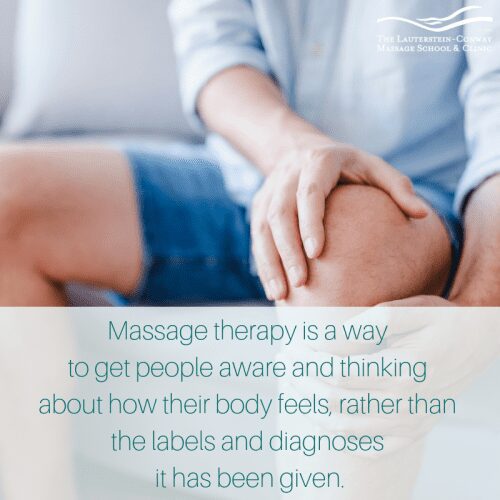Fancy Word and Even More Fascinating Work!
“The skin, in common with the nervous system, arises from the outermost layer of the embryo, the ectoderm. The ectoderm also gives rise to the hair, teeth and sense organs of smell, taste, hearing, vision and touch. The central nervous system, develops as the inturned portion of the general surface of the embryonic body. The nervous system is, then, a buried part of the skin, or, alternatively, the skin may be regarded as the most exposed portion of the nervous system.”
Adapted from Ashley Montagu, Touching: The Human Significance of the Skin
These words (written 25 years ago!) are inevitably and finally being applied within the context of massage therapy. Bodyworkers and massage educators have focused mostly on the muscles and more recently on fascia. That itself has been an enormous step forward – especially since Ida Rolf identified fascia as the “organ of structure” in the mid 1950’s.
Many people are also now looking, as per Montagu, at the nervous system as an equally important medium to address in our work. Clients do not relax and have their pain eased unless the nervous system is contacted through the bodymind. Others are looking at the bones and joints as an equally important medium, as explored especially by Zero Balancing.
Dermoneuromodulating was developed by Diane Jacobs, PT, a Canadian physiotherapist, approximately 15 years ago. DNM has acquired a dedicated following ranging from full-time DNM therapists to massage therapists who incorporate its techniques and theory into their tool bags.
The primary focus is then on the cutaneous nerves in the skin and finding ways to help them change through the impact on the brain – therefore mind and body. It is a work that is easier on both therapist and client with significant therapeutic outcomes. It also gives therapists who often have not thoroughly studied the nervous system an exciting context to realize the neural roots of some of their clients’ problems.
Diane Jacobs writes “DermoNeuroModulating, or -tion, is a structured, interactive approach to manual therapy that considers the nervous system of the patient from skin cell to sense of self. Techniques are slow, light, kind, intelligent, responsive and effective. Positioning of limbs and trunk affects deeper nerve trunks (by shortening and widening their container), and is combined with skin stretch directed toward cutaneous fields of nerves that branch outward into skin (which may draw neural structure further through its container).”
Here is a lengthy but thorough interview with Diane Jacobs about Dermoneuromodulation, its background and how relevant (and revolutionary) it is as a manual therapy today. (She even confesses she would have loved to have been a massage therapist at the 20:30 mark. Skip there to here her thoughts on that!)
To offer more complete solutions to one’s clients, it is increasingly important to have the skills to address all layers of the person – skin, nerves, muscles, fascia, bones, joints, mind, emotion and body.
Dermoneuromodulating adds the missing piece of the skin and nervous system!!
Lauterstein-Conway Massage School periodically offers courses in Dermoneuromodulation through its massage therapy continuing education program. See what course work is coming up.

